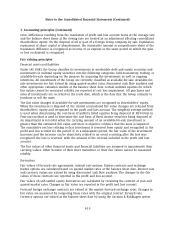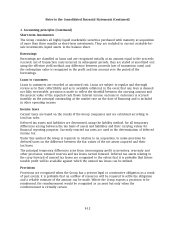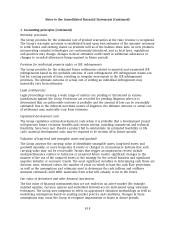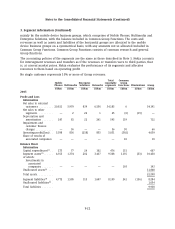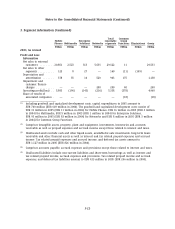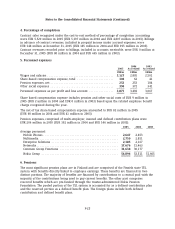Nokia 2005 Annual Report Download - page 155
Download and view the complete annual report
Please find page 155 of the 2005 Nokia annual report below. You can navigate through the pages in the report by either clicking on the pages listed below, or by using the keyword search tool below to find specific information within the annual report.Notes to the Consolidated Financial Statements (Continued)
1. Accounting principles (Continued)
which inherently contain some degree of uncertainty. Management bases its estimates on
historical experience and various other assumptions that are believed to be reasonable under the
circumstances, the results of which form the basis for making judgments about the reported
carrying values of assets and liabilities and the reported amounts of revenues and expenses that
may not be readily apparent from other sources. Actual results may differ from these estimates
under different assumptions or conditions.
Set forth below are areas requiring significant judgment and estimation that may have an impact
on reported results and the financial position.
Revenue recognition
Sales from the majority of the Group are recognized when persuasive evidence of an arrangement
exists, delivery has occurred, the fee is fixed or determinable and collectibility is probable. Current
sales may materially change if management’s assessment of such criteria was determined to be
inaccurate.
Revenue from contracts involving solutions achieved through modification of complex
telecommunications equipment is recognized on the percentage of completion basis when the
outcome of the contract can be estimated reliably. Recognized revenues and profits are subject to
revisions during the project in the event that the assumptions regarding the overall project
outcome are revised. Current sales and profit estimates for projects may materially change due to
the early stage of a long-term project, new technology, changes in the project scope, changes in
costs, changes in timing, changes in customers’ plans, realization of penalties, and other
corresponding factors.
Customer financing
The Group has provided a limited amount of customer financing and agreed extended payment
terms with selected customers. Should the actual financial position of the customers or general
economic conditions differ from assumptions, the ultimate collectibility of such financings and
trade credits may be required to be re-assessed, which could result in a write-off of these balances
and thus negatively impact profits in future periods.
Allowances for doubtful accounts
The Group maintains allowances for doubtful accounts for estimated losses resulting from the
subsequent inability of customers to make required payments. If the financial conditions of
customers were to deteriorate, resulting in an impairment of their ability to make payments,
additional allowances may be required in future periods.
Inventory-related allowances
The Group periodically reviews inventory for excess amounts, obsolescence and declines in market
value below cost and records an allowance against the inventory balance for any such declines.
These reviews require management to estimate future demand for products. Possible changes in
these estimates could result in revisions to the valuation of inventory in future periods.
F-17





